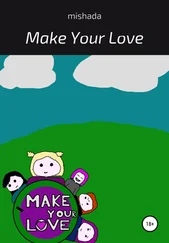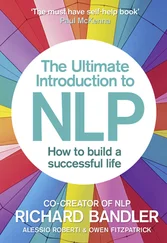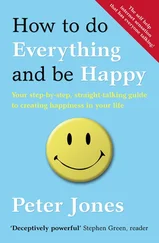Richard Bandler’s
Guide to Trance- formation
Make Your Life Great

TO MY SON JAY,
MY DAUGHTER ELIZABETH,
AND TO DR. GLENDA BANDLER—THE
THREE SHINING LIGHTS IN MY LIFE.
Cover Page
Title Page Richard Bandler’s Guide to Trance- formation Make Your Life Great
Dedication TO MY SON JAY, MY DAUGHTER ELIZABETH, AND TO DR. GLENDA BANDLER—THE THREE SHINING LIGHTS IN MY LIFE.
Foreword
A Note from the Editor
Introduction
Part 1
One Patterns, Learning, And Change
Two Doing More Of What Works
Three Representing “Reality”
Four Language And Change
Five Directions Or Outcomes
Six Seeing Inside The Black Box
Seven Submodality Distinctions
Eight The Power Of Belief
Part 2
Nine Developing Your Skills
Ten Hypnosis And Control
Eleven Inside And Down
Twelve Deeper, And Faster, Still
Thirteen Remembered Peace
Fourteen Creativity Out Of Confusion
Fifteen Advanced Submodalities
Part 3
Sixteen Back To The Future
Seventeen Pushing Past Limitations
Eighteen Repatterning The Past
Part 4
Editor's Note
Nineteen The Structure Of Trance-formation
Twenty In Conclusion
Glossary
Resource Files
Recommended Reading and Audiovisual Resources
The Society of NLP Richard Bandler Licensing Agreement
Praise
Copyright
About the Publisher

WOW! WHAT AN HONOR to write the foreword for one of my favorite books of all time.
Back in 1985, I was working as a radio broadcaster and went to interview a local hypnotist for my programme. It had been a particularly bad week—I’d split up with my girlfriend, the people in the apartment next to where I was living seemed to be having a “who can make the most noise” contest, and to top things off, that morning I’d had a flaming row with my boss.
When I sat down in his office, the hypnotist said, “Rather than try and explain how this works, I think you’d benefit from a demonstration.” Skeptically, I replied, “Let the healing begin.”
To my delighted surprise, in only a few minutes I felt relaxed and quite euphoric. Even more impressive to me was that while I knew there were still issues I had to deal with in my life, they no longer carried any emotional charge. I just knew that I could handle them.
How could it be that easy? Didn’t therapy take months, or even years? Wasn’t I supposed to tell him all about my childhood?
When I asked him what he had done to me, he explained that he had used something called Neuro-Linguistic Programming, or NLP. With NLP, he was able to notice patterns in my language and behavior that let him know exactly what I was doing in my brain to create my experience. He explained to me that hypnosis was just one of the many tools in this amazing new technology. I was hooked from that moment forward!
He lent me a book by Dr Richard Bandler—the first edition of the book you are holding in your hands right now. Not only did I read it, but my life began to change for the better almost immediately.
Several years later I met Richard at a seminar in London and we became friends. The more I learned from him, the more I wanted to know.
Even though I was at the top of the TV ratings and filling theatres every night with my hypnotism show, I began spending my weekends sitting with small groups of people in hotels and teaching them the basics of NLP. This book was our bible—the most powerful and practical guide to NLP and hypnosis ever written.
I flew to San Francisco and started to harass Richard. “I would really like to put on a training session in London with you,” I said. Years later we had become the biggest NLP training organization in the world. I feel very privileged to train by his side.
This book has made a massive difference to my life and to the lives of so many people around the world. Not only does it eloquently detail many easy techniques you can use straight away, it beautifully captures the spirit of Richard’s humorous and creative style of presentation, a style we refer to as “stand-up therapy.”
What is so exciting about this new edition is that Richard has continued to evolve NLP and hypnosis far beyond what they were when it was first published nearly 20 years ago. Inside, you will find not only an introduction to “classical NLP” and “Ericksonian Hypnosis,” but also the very latest innovations and developments from one of the true creative geniuses of our time.
We cannot control everything that happens to us, but using these techniques gives us control over the way we feel about the events of our lives, and consequently what we decide to do in response. I hope you use this amazing book to unleash your power and redesign your destiny. May each page fill you with the delighted fascination that I felt when I first read it.
Hang on—your life might just be about to change for the better!
PAUL MCKENNA, PH.D.

I AM DEEPLY PRIVILEGED to have been invited to edit this book by Richard Bandler on the subject of hypnosis and Neuro-Linguistic Programming. Once or twice in a lifetime, one may encounter a true rainmaker, someone who makes the impossible possible to the benefit of those around him. From the very first page I read of his first book, The Structure of Magic I, so many years ago, I recognized him as one of these rare beings. Since then, I have studied with Richard for many years and have benefited hugely from his training and his personal attention, which he has always given with the utmost kindness, generosity, and patience.
I cannot pretend that editing his writings has been an easy task—not because of a lack of material to include (few people on this planet can be as consistently creative and productive as Richard), but because it has been difficult to know what to leave out.
This is not a definitive book of Richard Bandler’s work. No single book could hope to be that. Rather, it is one of a series of new works written in his own voice to introduce newcomers to Neuro-Linguistic Programming and his endlessly creative development of this and related fields.
In this book, Richard returns to his roots—hypnosis, altered states, trance-work…he declines to call it one thing. From the time he met Milton Erickson nearly forty years ago, he has been deeply interested in how the alignment of conscious and unconscious processes can cure apparently intractable illnesses, remove deep-seated emotional problems, and create shining futures for those prepared to do the work. But he has also been driven to seek the boundaries to what is possible…limits, he says, that he has not yet found.
The principles, processes, techniques, and exercises he writes about here may seem simple, but do not be deceived. They are profoundly effective, and Richard’s ability to teach with apparent simplicity, together with humor and a kind of laid-back energy, conceals highly complex and ambitious underpinnings. With Richard, it’s never “what you see is what you get.” What you get is not only what you get; it’s always far more than you ever noticed him giving or you expected to receive.
Читать дальше













